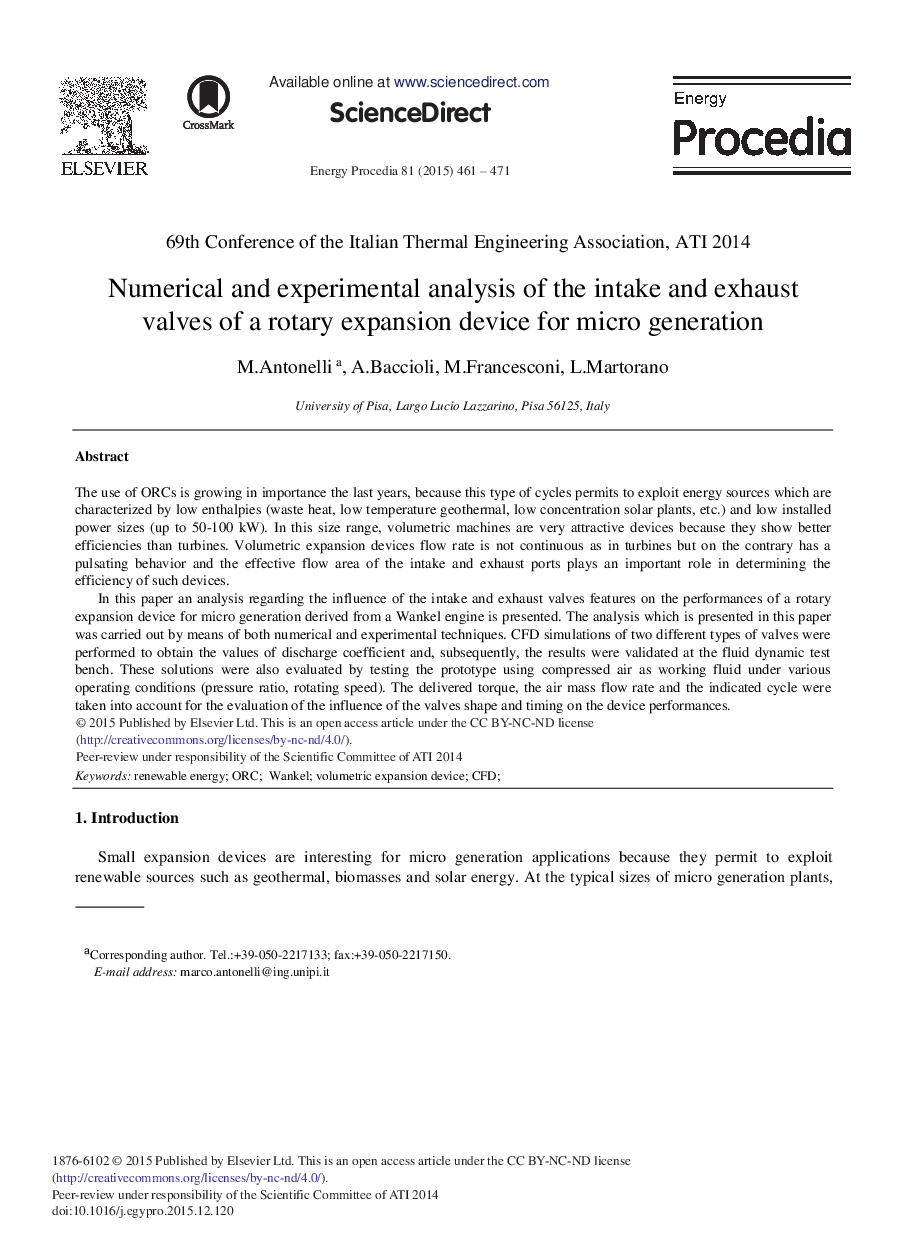| کد مقاله | کد نشریه | سال انتشار | مقاله انگلیسی | نسخه تمام متن |
|---|---|---|---|---|
| 1509272 | 1511154 | 2015 | 11 صفحه PDF | دانلود رایگان |
The use of ORCs is growing in importance the last years, because this type of cycles permits to exploit energy sources which are characterized by low enthalpies (waste heat, low temperature geothermal, low concentration solar plants, etc.) and low installed power sizes (up to 50-100 kW). In this size range, volumetric machines are very attractive devices because they show better efficiencies than turbines. Volumetric expansion devices flow rate is not continuous as in turbines but on the contrary has a pulsating behavior and the effective flow area of the intake and exhaust ports plays an important role in determining the efficiency of such devices.In this paper an analysis regarding the influence of the intake and exhaust valves features on the performances of a rotary expansion device for micro generation derived from a Wankel engine is presented. The analysis which is presented in this paper was carried out by means of both numerical and experimental techniques. CFD simulations of two different types of valves were performed to obtain the values of discharge coefficient and, subsequently, the results were validated at the fluid dynamic test bench. These solutions were also evaluated by testing the prototype using compressed air as working fluid under various operating conditions (pressure ratio, rotating speed). The delivered torque, the air mass flow rate and the indicated cycle were taken into account for the evaluation of the influence of the valves shape and timing on the device performances.
Journal: Energy Procedia - Volume 81, December 2015, Pages 461-471
